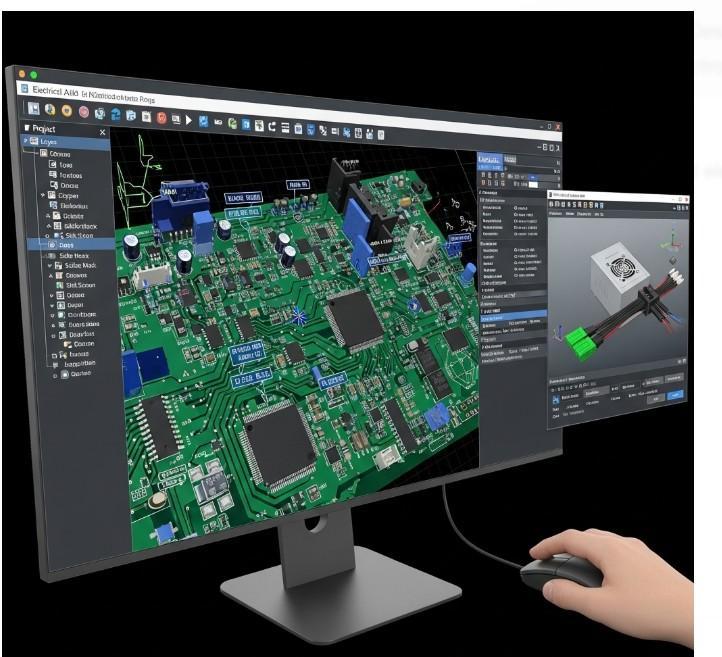Mapping the Circuitry: The US Electrical Electronic CAD Market

The US Electrical Electronic Computer Aided Design Market is a highly sophisticated and competitive ecosystem that serves as the bedrock of the nation's technology sector. This market, driven by relentless innovation in design, is on a clear growth path, with projections showing it will expand from $2.5 billion in 2024 to $5 billion by 2035. This doubling in size, supported by a 6.5% CAGR, is powered by demand from a diverse customer base, including leading semiconductor manufacturers, consumer electronics giants, automotive innovators, and aerospace contractors. The landscape is dominated by a few major Electronic Design Automation (EDA) vendors who provide the comprehensive toolchains necessary to design the next generation of smart and connected devices, fostering intense competition and continuous technological advancement.
The market can be segmented by the specific applications the ECAD tools serve, primarily revolving around the design of integrated circuits (ICs), printed circuit boards (PCBs), and more complex multi-chip modules (MCMs) and system-in-packages (SiPs). Each of these applications presents unique design challenges and requires specialized software capabilities. IC design, for instance, operates at the nanometer scale and involves a highly complex workflow from logic synthesis to physical verification, demanding the most advanced and expensive EDA tools. PCB design, while operating at a larger scale, involves its own complexities, such as managing high-speed signals, thermal dissipation, and manufacturability across multiple layers, requiring a different but equally sophisticated set of layout and analysis tools.
Further segmentation of the market by industry vertical reveals how integral ECAD is across the entire economy. The consumer electronics sector relies on these tools to design the compact and powerful PCBs inside smartphones, laptops, and wearables. In the automotive industry, ECAD is essential for creating the hundreds of electronic control units (ECUs), advanced driver-assistance systems (ADAS), and complex wiring harnesses in modern vehicles. The telecommunications sector uses ECAD to design the high-frequency circuits for 5G base stations and networking equipment, while the aerospace and defense industry depends on it for the highly reliable and rugged electronics in avionics and satellite systems. This broad applicability across high-growth sectors ensures a stable and expanding market.
Another crucial way to view the market is through its deployment models: traditional on-premise software versus the increasingly popular cloud-based or Software-as-a-Service (SaaS) model. On-premise solutions offer maximum control and security, which is often preferred for sensitive defense or semiconductor projects. However, cloud-based ECAD platforms are gaining significant traction due to their inherent benefits. They facilitate seamless collaboration among globally dispersed design teams, offer scalable access to high-performance computing for intensive simulations, and reduce the capital expenditure and IT overhead associated with maintaining local servers. This trend towards cloud adoption is a significant driver of market evolution, making powerful design tools more accessible to a wider range of companies.
Explore Our Latest Trending Reports:
- Memes & Cultura da Comunidade
- Artigos e Análises
- Pessoal
- Oportunidade
- Projeto
- Conhecimento
- Dúvidas & Pedidos de Ajuda
- Reflexões & Opiniões
- Tendências
- Jogos
- Lançamentos & Anúncios
- Saúde & Bem Estar
- Eventos & Convites
- Conteúdo Técnico
- Entretenimento
- Networking
- Festas & Festivais
- Religião
- Iniciativas de Impacto


